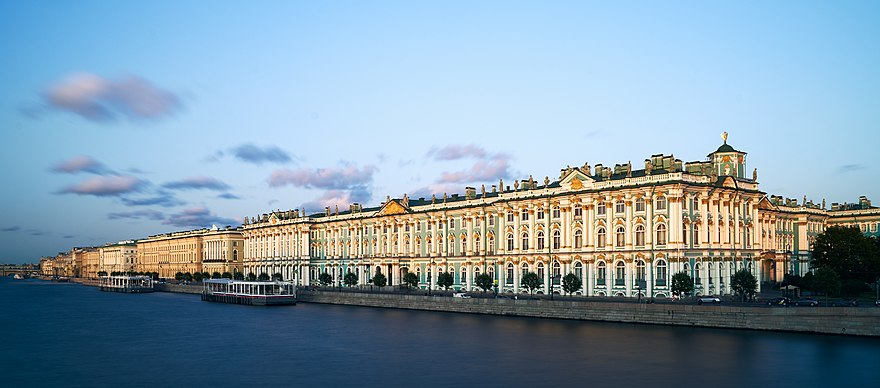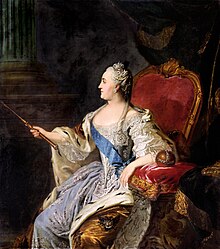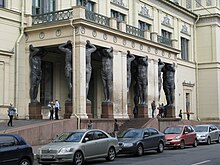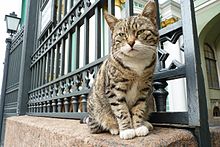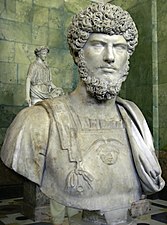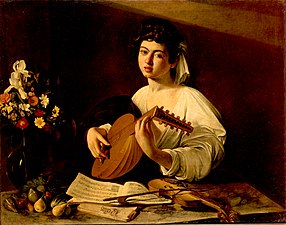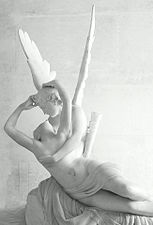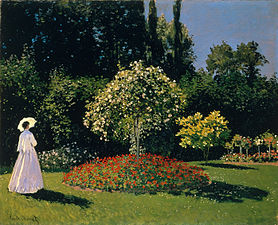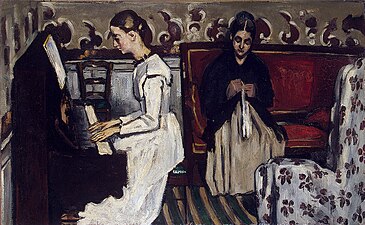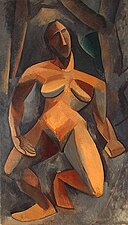Hermitage
Hermitage
One of the world-wide known museums is the Hermitage. The word «Hermitage» means «a place of solitude». This name was given in the XVIII century by Catherine II to her private museum housed in a small building adjacent to the Winter Palace and accessible only to the chosen few.
In the course of time, the Hermitage grew into one of the greatest museums of the world. At the present, the collections take up five interconnected buildings. The museum retains its old name.
The accumulation of artifacts let to the formation of new departments devoted to the culture and art of the Peoples of the East, of the Prehistoric culture, and of the Russian culture. Three other departments are those of Western European art, classical antiquities and numismatics.
One of the rooms that impressed visitor the most is St. George Hall. The interior of the room is considered by experts to be a perfect example of the Classical Style. The room covers about 800 square metres, but does not seem enormous due to perfect proportions. It is decorated in the whitest marble and gilded bronze.
The Throne Room was used for column assemblies. Members of the Tzar’s family, when coming of age, took their oaths here.
The Leonardo da Vinci Room is one of the most gorgeous interiors. The room is decorated in the style of 17 century French Baroque. The Hermitage possesses two, out of 12 or 14 works surviving from Leonardo.
The Rembrandt collection is one of the most treasured possessions of the museum. It members 24 canvases.
The Malachite Room reflects the style of 1889. The columns, pilasters, and floor lamps are veneered with thin plaques of rich green malachite. About two tons of malachite were used in decoration of the room.
Questions:
1. What does the word «Hermitage» mean?
2. How many departments are there in the Hermitage? What are they?
3. The interior of which room is the best example of the Classical Style?
4. What kinds of material are used for the decoration of St George’s Hall?
5. Why was the Throne Room so important?
6. How many works of Leonardo da Vinci does the Hermitage possess?
7. What is the most treasured possession of the Hermitage?
8. What material was used for the decoration of Malachite Room?
Эрмитаж
Эрмитаж — один из широко известных во всем мире музеев. Слово «Эрмитаж» означает «место для уединения». Это имя было дано в XVIII веке Екатериной II своему частному музею, расположенному в небольшом здании, примыкающем к Зимнему Дворцу, и доступному только единицам избранных.
С прошествием времени Эрмитаж разросся в один из величайших музеев мира. Сейчас коллекции занимают пять связанных между собой зданий. Музей сохранил свое старое имя.
Накопление сокровищ послужило причиной формирования новых отделений, посвященных культуре и искусству народов Востока, доисторической культуре и русской культуре. Три других отделения представляют искусства Запад¬ной Европы, классические произведения античности и нумизматику.
Одна из наиболее поражающих посетителя комнат — это Георгиевский Зал. Интерьер комнаты, по мнению экспертов, являет собой совершенный образец классического стиля. Комната занимает около 800 кв. м, но не выглядит огромной из-за совершенных пропорций. Она отделана белейшим мрамором и позолоченной бронзой.
Тронная Комната использовалась для торжественных собраний. Члены царской семьи, по достижении определенного возраста, принимали здесь присягу.
Комната Леонардо да Винчи — один из самых велико лепных интерьеров. Комната отделана в стиле французского барокко XVII века. Эрмитаж владеет двумя из 12 или 14 работ, сохранившихся после Леонардо.
Собрание произведений Рембрандта — одно из бесценных владений музея. Оно насчитывает 24 холста.
Малахитовая Комната отражает стиль 1839 года. Колонны, пилястры, напольные лампы покрыты тонкими пластинками из темно-зеленого малахита. Около двух тонн малахита было использовано при отделке комнаты.
Источник: 100 тем английского языка. Авторы Каверина В. Бойко В. Жидких Н.
One of the world-wide known museums is the Hermitage.Эрмитаж – один из широко известных во всем мире музеев.
The word “Hermitage” means “a place of solitude”.Слово “эрмитаж” означает “место для уединения”.
This name was given in the XVIII century by Catherine П to her private museum housed in a small building adjacent to the Winter Palace and accessible only to the chosen few.Это имя было дано в XVIII веке Екатериной II своему частному музею, расположенному в небольшом здании, примыкающем к Зимнему дворцу, и доступному только единицам избранных.
In the course of time, the Hermitage grew into one of the greatest museums of the world.Со временем Эрмитаж разросся в один из величайших музеев мира.
At the present, the collections take up five interconnected buildings.Сейчас коллекции занимают пять связанных между собой зданий.
The museum retains its old name.Музей сохранил свое старое имя.
The accumulation of artifacts let to the formation of new departments devoted to the culture and art of the Peoples of the East, of the Prehistoric culture, and of the Russian culture.Накопление сокровищ послужило причиной формирования новых отделений, посвященных культуре и искусству народов Востока, доисторической культуре и русской культуре.
Three other departments are those of Western European art, classical antiquities and numismatics.Три других отделения представляют искусство Западной Европы, классические произведения античности и нумизматику.
One of the rooms that impressed visitor the most is St. George Hall.Одна из наиболее поражающих посетителя комнат – это Георгиевский зал.
The interior of the room is considered by experts to be a perfect example of the Classical Style.Интерьер комнаты, по мнению экспертов, являет собой совершенный образец классического стиля.
The room covers about 800 square metres, but does not seem enormous due to perfect proportions.Комната занимает около 800 кв. м, но не выглядит огромной из-за совершенных пропорций.
It is decorated in the whitest marble and gilded bronze.Она отделана белоснежным мрамором и позолоченной бронзой.
The Throne Hall was used for column assemblies.Тронный зал использовался для торжественных собраний.
Members of the Tzar’s family, when coming of age, took their oaths here.Члены царской семьи, по достижении определенного возраста, принимали здесь присягу.
The Leonardo da Vinci Hall is one of the most gorgeous interiors.Зал Леонардо да Винчи имеет один из самых великолепных интерьеров.
The hall is decorated in the style of 17 century French Baroque.Зал отделан в стиле французского барокко XVII века.
The Hermitage possesses two, out of 12 or 14 works surviving from Leonardo.Эрмитаж владеет двумя из 12 или 14 сохранившихся работ Леонардо.
The Rembrandt collection is one of the most treasured possessions of the museum.Собрание произведений Рембрандта – одно из бесценных сокровищ музея.
It members 24 canvases.Оно насчитывает 24 холста.
The Malachite Room reflects the style of 1889 Малахитовая комната отражает стиль 1839 года.
The columns, pilasters, and floorlamps are veneered with thin plaques of rich green malachite.Колонны, пилястры, напольные лампы покрыты тонкими пластинками из темно-зеленого малахита.
About two tons of malachite were used in decoration of the room.Около двух тонн малахита было использовано при отделке комнаты.
Other forms: hermitages
Your summer cabin deep in the woods where you go to think about how funny life is sometimes? If you want to sound fancy, it could be called a hermitage, a dwelling removed from civilization.
The noun hermitage has origins in the French word hermite, meaning “hermit,” a person who lives alone, far from society. Hermitage can describe the place where a hermit lives, or a dwelling occupied by an isolated religious group that prefers solitude. But the word is likely to be used more broadly to describe a secluded or remote dwelling, a place of solitude, where you won’t run into a neighbor while mowing the lawn in the backyard.
Definitions of hermitage
-
noun
the abode of a hermit
DISCLAIMER: These example sentences appear in various news sources and books to reflect the usage of the word ‘hermitage’.
Views expressed in the examples do not represent the opinion of Vocabulary.com or its editors.
Send us feedback
EDITOR’S CHOICE
Look up hermitage for the last time
Close your vocabulary gaps with personalized learning that focuses on teaching the
words you need to know.
Sign up now (it’s free!)
Whether you’re a teacher or a learner, Vocabulary.com can put you or your class on the path to systematic vocabulary improvement.
Get started
Coordinates: 59°56′26″N 30°18′49″E / 59.94056°N 30.31361°E
 |
|
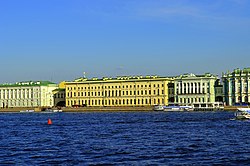
View of (from left) the Hermitage Theatre, Old Hermitage, and Small Hermitage |
|

Interactive fullscreen map |
|
| Established | 1764; 259 years ago |
|---|---|
| Location | 34 Palace Embankment, Dvortsovy Municipal Okrug, Central District, Saint Petersburg, Russia[2] |
| Collection size | 3 million[1] |
| Visitors | 1,649,443 visitors (2021)[3] |
| Director | Mikhail Piotrovsky |
| Public transit access | Admiralteyskaya station |
| Website | hermitagemuseum.org |
The State Hermitage Museum (Russian: Государственный Эрмитаж, tr. Gosudarstvennyj Ermitaž, IPA: [ɡəsʊˈdarstvʲɪn(ː)ɨj ɪrmʲɪˈtaʂ]) is a museum of art and culture in Saint Petersburg, Russia. It is the second largest art museum in the world by gallery space.[4][note 1][citation needed] It was founded in 1764 when Empress Catherine the Great acquired an impressive collection of paintings from the Berlin merchant Johann Ernst Gotzkowsky. The museum celebrates the anniversary of its founding each year on 7 December, Saint Catherine’s Day.[5] It has been open to the public since 1852. The Art Newspaper ranked the museum 6th in their list of the most visited art museums, with 1,649,443 visitors in 2021.[3]
Its collections, of which only a small part is on permanent display, comprise over three million items (the numismatic collection accounts for about one-third of them).[6] The collections occupy a large complex of six historic buildings along Palace Embankment, including the Winter Palace, a former residence of Russian emperors. Apart from them, the Menshikov Palace, Museum of Porcelain, Storage Facility at Staraya Derevnya, and the eastern wing of the General Staff Building are also part of the museum. The museum has several exhibition centers abroad. The Hermitage is a federal state property. Since July 1992, the director of the museum has been Mikhail Piotrovsky.[7]
Of the six buildings in the main museum complex, five—namely the Winter Palace, Small Hermitage, Old Hermitage, New Hermitage, and Hermitage Theatre—are all open to the public. The entrance ticket for foreign tourists costs more than the fee paid by citizens of Russia and Belarus. However, entrance is free of charge the third Thursday of every month for all visitors, and free daily for students and children. The museum is closed on Mondays. The entrance for individual visitors is located in the Winter Palace, accessible from the Courtyard.
Etymology[edit]
A hermitage is the dwelling of a hermit or recluse. The word derives from Old French hermit, ermit «hermit, recluse», from Late Latin eremita, from Greek eremites, that means «people who live alone», which is in turn derived from ἐρημός (erēmos), «desert». The building was initially given this name because of its exclusivity — in its early days, only very few people were allowed to visit.[citation needed]
Buildings[edit]
Originally, the only building housing the collection was the «Small Hermitage». Today, the Hermitage Museum encompasses many buildings on the Palace Embankment and its neighbourhoods. Apart from the Small Hermitage, the museum now also includes the «Old Hermitage» (also called «Large Hermitage»), the «New Hermitage», the «Hermitage Theatre», and the «Winter Palace», the former main residence of the Russian tsars. In recent years, the Hermitage has expanded to the General Staff Building on the Palace Square facing the Winter Palace, and the Menshikov Palace.[8]
The Hermitage Museum complex. From left to right: Hermitage Theatre – Old Hermitage – Small Hermitage – Winter Palace (the «New Hermitage» is situated behind the Old Hermitage)
Collections[edit]
The Western European Art collection includes European paintings, sculpture, and applied art from the 13th to the 20th centuries. It is displayed, in about 120 rooms, on the first and second floor of the four main buildings. Drawings and prints are displayed in temporary exhibitions.
Egyptian antiquities[edit]
Since 1940, the Egyptian collection, dating back to 1852 and including the former Castiglione Collection, has occupied a large hall on the ground floor in the eastern part of the Winter Palace. It serves as a passage to the exhibition of Classical Antiquities. A modest collection of the culture of Ancient Mesopotamia, including a number of Assyrian reliefs from Babylon, Dur-Sharrukin and Nimrud, is located in the same part of the building.
Classical antiquities[edit]
The collection of classical antiquities occupies most of the ground floor of the Old and New Hermitage buildings. The interiors of the ground floor were designed by German architect Leo von Klenze in the Greek revival style in the early 1850s, using painted polished stucco and columns of natural marble and granite. One of the largest and most notable interiors of the first floor is the Hall of Twenty Columns, divided into three parts by two rows of grey monolithic columns of Serdobol granite, intended for the display of Graeco-Etruscan vases. Its floor is made of a modern marble mosaic imitating ancient tradition, while the stucco walls and ceiling are covered in painting.
The Room of the Great Vase in the western wing features the 2.57 m (8.4 ft) high Kolyvan Vase, weighing 19 t (42,000 lb), made of jasper in 1843 and installed before the walls were erected. While the western wing was designed for exhibitions, the rooms on the ground floor in the eastern wing of the New Hermitage, now also hosting exhibitions, were originally intended for libraries. The floor of the Athena Room in the south-eastern corner of the building, one of the original libraries, is decorated with an authentic 4th-century mosaic excavated in an early Christian basilica in Chersonesos in 1854.
The collection of classical antiquities features Greek artifacts from the third millennium – fifth century BC, ancient Greek pottery, items from the Greek cities of the North Pontic Greek colonies, Hellenistic sculpture and jewellery, including engraved gems and cameos, such as the famous Gonzaga Cameo, Italic art from the 9th to second century BC, Roman marble and bronze sculpture and applied art from the first century BC — fourth century AD, including copies of Classical and Hellenistic Greek sculptures. One of the highlights of the collection is the Tauride Venus, which, according to latest research, is an original Hellenistic Greek sculpture rather than a Roman copy as it was thought before.[9] There are, however, only a few pieces of authentic Classical Greek sculpture and sepulchral monuments.
Prehistoric art[edit]
On the ground floor in the western wing of the Winter Palace the collections of prehistoric artifacts and the culture and art of the Caucasus are located, as well as the second treasure gallery. The prehistoric artifacts date from the Paleolithic to the Iron Age and were excavated all over Russia and other parts of the former Soviet Union and Russian Empire. Among them is a renowned collection of the art and culture of nomadic tribes of the Altai from Pazyryk and Bashadar sites, including the world’s oldest surviving knotted-pile carpet and a well-preserved wooden chariot, both from the 4th–3rd centuries BC. The Caucasian exhibition includes a collection of Urartu artifacts from Armenia and Western Armenia. Many of them were excavated at Teishebaini under the supervision of Boris Piotrovsky, former director of the Hermitage Museum.
Jewelry and decorative art[edit]
Four small rooms on the ground floor, enclosed in the middle of the New Hermitage between the room displaying Classical Antiquities, comprise the first treasure gallery, featuring western jewellery from the 4th millennium BC to the early 20th century AD. The second treasure gallery, located on the ground floor in the southwest corner of the Winter Palace, features jewellery from the Pontic steppes, Caucasus and Asia, in particular Scythian and Sarmatian gold. Visitors may only visit the treasure galleries as part of a guided tour.
Pavilion Hall, designed by Andrei Stackenschneider in 1858, occupies the first floor of the Northern Pavilion in the Small Hermitage. It features the 18th-century golden Peacock Clock by James Cox and a collection of mosaics. The floor of the hall is adorned with a 19th-century imitation of an ancient Roman mosaic.
Two galleries spanning the west side of the Small Hermitage from the Northern to Southern Pavilion house an exhibition of Western European decorative and applied art from the 12th to 15th century and the fine art of the Low Countries from the 15th and 16th centuries.
Italian Renaissance[edit]
The rooms on the first floor of the Old Hermitage were designed by Andrei Stakenschneider in revival styles in between 1851 and 1860, although the design survives only in some of them. They feature works of Italian Renaissance artists, including Giorgione, Titian, Veronese, as well as Benois Madonna and Madonna Litta attributed to Leonardo da Vinci or his school.
The Small Italian Skylight Room
The Italian Renaissance galleries continues in the eastern wing of the New Hermitage with paintings, sculpture, majolica and tapestry from Italy of the 15th–16th centuries, including Conestabile Madonna and Madonna with Beardless St. Joseph by Raphael. The gallery known as the Raphael Loggias, designed by Giacomo Quarenghi and painted by Cristopher Unterberger and his workshop in the 1780s as a replication of the loggia in the Apostolic Palace in Rome frescoed by Raphael, runs along the eastern facade.
Italian and Spanish fine art[edit]
The first floor of New Hermitage contains three large interior spaces in the center of the museum complex with red walls and lit from above by skylights. These are adorned with 19th-century Russian lapidary works and feature Italian and Spanish canvases of the 16th-18th centuries, including Veronese, Giambattista Pittoni, Tintoretto, Velázquez and Murillo. In the enfilade of smaller rooms alongside the skylight rooms the Italian and Spanish fine art of the 15th-17th centuries, including Michelangelo’s Crouching Boy and paintings by El Greco.
The museum also houses paintings by Luis Tristán, Francisco de Zurbarán, Alonso Cano, José de Ribera and Goya.
Knights’ Hall[edit]
The Knights’ Hall, a large room in the eastern part of the New Hermitage originally designed in the Greek revival style for the display of coins, now hosts a collection of Western European arms and armour from the 15th-17th centuries, part of the Hermitage Arsenal collection. The Hall of Twelve Columns, in the southeast corner of the New Hermitage, is adorned with columns of grey Serdobol granite and was also designed in the Greek revival style for the display of coins, is now used for temporary exhibitions.
The Gallery of the History of Ancient Painting adjoins the Knights’ Hall and also flanks the skylight rooms. It was designed by Leo von Klenze in the Greek revival style as a prelude to the museum and features neoclassical marble sculptures by Antonio Canova and his followers. In the middle, the gallery opens to the main staircase of the New Hermitage, which served as the entrance to the museum before the October Revolution of 1917, but is now closed. The upper gallery of the staircase is adorned with twenty grey Serdobol granite columns and feature 19th-century European sculpture and Russian lapidary works.
Dutch Golden Age and Flemish Baroque[edit]
The rooms and galleries along the southern facade and in the western wing of the New Hermitage are now entirely devoted to Dutch Golden Age and Flemish Baroque painting of the 17th century, including the large collections of Van Dyck, Rubens and Rembrandt. They also contain several paintings by Jan Brueghel the Elder (Velvet period), Frans Snyders (for example, The Fish Market), Gerard ter Borch, Paulus Potter, Jacob van Ruisdael, Jan van Goyen, Ferdinand Bol and Gerard van Honthorst.
German, Swiss, British and French fine art[edit]
The first floor rooms on the southern facade of the Winter Palace are occupied by the collections of German fine art of the 16th century and French fine art of the 15th–18th centuries, including paintings by Poussin, Lorrain, Watteau.
The collections of French decorative and applied art from the 17th–18th centuries and British applied and fine art from the 16th–19th century, including Thomas Gainsborough and Joshua Reynolds, are on display in nearby rooms facing the courtyard. This area also holds paintings by German artists, including Hans Wertinger, Lucas Cranach the Elder, Barthel Bruyn the Elder, Caspar David Friedrich (Moonrise by the Sea), Anton Mengs, Hans Thoma, Anselm Feuerbach, Franz Stuck (Two Men Fighting Over a Woman) and Heinrich Campendonk as well as paintings by Swiss painters Angelica Kauffman, Alexandre Calame, Arnold Böcklin and Ferdinand Hodler.
Russian art[edit]
The richly decorated interiors of the first floor of the Winter Palace on its eastern, northern and western sides are part of the Russian culture collection and host the exhibitions of Russian art from the 11th-19th centuries. Temporary exhibitions are usually held in the Nicholas Hall.
French Neoclassical, Impressionist, and post-Impressionist art[edit]
Garden at Bordighera, Impression of Morning, 1884, Claude Monet
French Neoclassical, Impressionist and post-Impressionist art, including works by Renoir, Monet, Van Gogh and Gauguin, are displayed on the fourth floor of the Eastern Wing of the General Staff Building. Also displayed are paintings by Camille Pissarro (Boulevard Montmartre, Paris), Paul Cézanne (Mount Sainte-Victoire), Alfred Sisley, Henri Morel, and Degas.[10][11]
Modern, German Romantic and other 19–20th century art[edit]
Modern art is displayed in the General Staff Building (Saint Petersburg). It features Matisse, Derain and other fauvists, Picasso, Malevich, Petrocelli, Kandinsky, Giacomo Manzù, Giorgio Morandi and Rockwell Kent. A large room is devoted to the German Romantic art of the 19th century, including several paintings by Caspar David Friedrich. The second floor of the Western wing features collections of the Oriental art (from China, India, Mongolia, Tibet, Central Asia, Byzantium and Near East).
History[edit]
Origins: Catherine’s collection[edit]
Catherine the Great started her art collection in 1764 by purchasing paintings from Berlin merchant Johann Ernst Gotzkowsky. He assembled the collection for Frederick II of Prussia, who ultimately refused to purchase it. Thus, Gotzkowsky provided 225 or 317 paintings (conflicting accounts list both numbers), mainly Flemish and Dutch, as well as others, including 90 not precisely identified, to the Russian crown.[12] The collection consisted of Rembrandt (13 paintings), Rubens (11 paintings), Jacob Jordaens (7 paintings), Anthony van Dyck (5 paintings), Paolo Veronese (5 paintings), Frans Hals (3 paintings, including Portrait of a Young Man with a Glove), Raphael (2 paintings), Holbein (2 paintings), Titian (1 painting), Jan Steen (The Idlers), Hendrik Goltzius, Dirck van Baburen, Hendrick van Balen and Gerrit van Honthorst.[13] Perhaps some of the most famous and notable artworks that were a part of Catherine’s original purchase from Gotzkowsky were Danaë, painted by Rembrandt in 1636; Descent from the Cross, painted by Rembrandt in 1624; and Portrait of a Young Man Holding a Glove, painted by Frans Hals in 1650. These paintings remain in the Hermitage collection today.[14]
In 1764, Catherine commissioned Yury Felten to build an extension on the east of the Winter Palace which he completed in 1766. Later it became the Southern Pavilion of the Small Hermitage. From 1767 to 1769, French architect Jean-Baptiste Vallin de la Mothe built the Northern Pavilion on the Neva embankment. Between 1767 and 1775, the extensions were connected by galleries, where Catherine put her collections.[15] The entire neoclassical building is now known as the Small Hermitage. During the time of Catherine, the Hermitage was not a public museum and few people were allowed to view its holdings. Jean-Baptiste Vallin de la Mothe also rebuilt rooms in the second story of the south-east corner block that was originally built for Elizabeth and later occupied by Peter III. The largest room in this particular apartment was the Audience Chamber (also called the Throne Hall) which consisted of 227 square meters.[14]
The Hermitage buildings served as a home and workplace for nearly a thousand people, including the Imperial family. In addition to this, they also served as an extravagant showplace for all kinds of Russian relics and displays of wealth prior to the art collections. Many events were held in these buildings including masquerades for the nobility, grand receptions and ceremonies for state and government officials. The «Hermitage complex» was a creation of Catherine’s that allowed all kinds of festivities to take place in the palace, the theatre and even the museum of the Hermitage. This helped solidify the Hermitage as not only a dwelling place for the Imperial family, but also as an important symbol and memorial to the imperial Russian state. Today, the palace and the museum are one and the same. In Catherine’s day, the Winter Palace served as a central part of what was called the Palace Square. The Palace Square served as St. Petersburg’s nerve center by linking it to all the city’s most important buildings. The presence of the Palace Square was extremely significant to the urban development of St. Petersburg, and while it became less of a nerve center later into the 20th century, its symbolic value was still very much preserved.[16]
Catherine acquired the best collections offered for sale by the heirs of prominent collectors. In 1769, she purchased Brühl’s collection, consisting of over 600 paintings and a vast number of prints and drawings, in Saxony. Three years later, she bought Crozat’s collection of paintings in France with the assistance of Denis Diderot. Next, in 1779, she acquired the collection of 198 paintings that once belonged to Robert Walpole in London followed by a collection of 119 paintings in Paris from Count Baudouin in 1781. Catherine’s favorite items to collect were believed to be engraved gems and cameos. At the inaugural exhibit of the Hermitage, opened by Charles, Prince of Wales in November 2000, there was an entire gallery devoted to representing and displaying Catherine’s favorite items. In this gallery her cameos are displayed along with cabinet made by David Roentgen, which holds her engraved gems. As the symbol of Minerva was frequently used and favored by Catherine to represent her patronage of the arts, a cameo of Catherine as Minerva is also displayed here. This particular cameo was created for her by her daughter-in-law, the Grand Duchess Maria Fyodorovna. This is only a small representation of Catherine’s vast collection of many antique and contemporary engraved gems and cameos.[17]
View of the Palace Embankment by Karl Beggrov, 1826. The Old Hermitage is in the middle of the painting.
The collection soon overgrew the building. In her lifetime, Catherine acquired 4,000 paintings from the old masters, 38,000 books, 10,000 engraved gems, 10,000 drawings, 16,000 coins and medals, and a natural history collection filling two galleries,[18] so in 1771 she commissioned Yury Felten to build another major extension. The neoclassical building was completed in 1787 and has come to be known as the Large Hermitage or Old Hermitage. Catherine also gave the name of the Hermitage to her private theatre, built nearby between 1783 and 1787 by the Italian architect Giacomo Quarenghi.[19] In London in 1787, Catherine acquired the collection of sculpture that belonged to Lyde Browne, mostly Ancient Roman marbles. Catherine used them to adorn the Catherine Palace and park in Tsarskoye Selo, but later they became the core of the Classical Antiquities collection of the Hermitage. From 1787 to 1792, Quarenghi designed and built a wing along the Winter Canal with the Raphael Loggias to replicate the loggia in the Apostolic Palace in Rome designed by Donato Bramante and frescoed by Raphael.[15][20][21] The loggias in Saint Petersburg were adorned with copies of Vatican frescoes painted by Cristopher Unterberger and his workshop in the 1780s.
Catherine’s collection of at least 4,000 paintings came to rival the older and more prestigious museums of Western Europe. Catherine took great pride in her collection and actively participated in extensive competitive art gathering and collecting that was prevalent in European royal court culture. Through her art collection she gained European acknowledgment and acceptance and portrayed Russia as an enlightened society. Catherine went on to invest much of her identity in being a patron of the arts. She was particularly fond of the Roman deity Minerva, whose characteristics according to classical tradition are military prowess, wisdom, and patronage of the arts. Using the title Catherine the Minerva, she created new institutions of literature and culture and also participated in many projects of her own, mostly play writing. The representation of Catherine alongside Minerva would come to be a tradition of enlightened patronage in Russia.[22]
Expansion in the 19th century[edit]
Portico with atlantes, historical entrance
In 1815, Alexander I of Russia purchased 38 pictures from the heirs of Joséphine de Beauharnais, most of which had been looted by the French in Kassel during the war. The Hermitage collection of Rembrandts was then considered the largest in the world. Also among Alexander’s purchases from Josephine’s estate were the first four sculptures by the neoclassical Italian sculptor Antonio Canova to enter the Hermitage collection.
Eventually the imperial collections were enriched by Greek and Scythian artifacts excavated within the Russian Empire.
Between 1840 and 1843, Vasily Stasov redesigned the interiors of the Southern Pavilion of the Small Hermitage. In 1838, Nicholas I commissioned the neoclassical German architect Leo von Klenze to design a building for the public museum. Space for the museum was made next to the Small Hermitage by the demolition of the Shepelev Palace and royal stables. The construction was overseen by the Russian architects Vasily Stasov and Nikolai Yefimov from 1842 to 1851 and incorporated Quarenghi’s wing with the Raphael Loggias.
In 1851, in Venice the museum acquired the collection of Cristoforo Barbarigo, including five more canvases by Titian. Today, all of the paintings but one (Danaë) by Titian in the Hermitage Museum came to St. Petersburg from the Barbarigo collection.
The New Hermitage was opened to the public on 5 February 1852.[23] In the same year the Egyptian Collection of the Hermitage Museum emerged and was particularly enriched by items given by the Duke of Leuchtenberg, Nicholas I’s son-in-law. Meanwhile, from 1851 to 1860, the interiors of the Old Hermitage were redesigned by Andrei Stackensneider to accommodate the State Assembly, Cabinet of Ministers and state apartments. Stakenschneider created the Pavilion Hall in the Northern Pavilion of the Small Hermitage from 1851 to 1858.[15]
Until the 1920s, the museum’s entrance was under the portico supported by five-metre high atlantes of grey Serdobol granite from Finland in the middle of the southern facade of the New Hermitage building.
In 1861, the Hermitage purchased from the Papal government part of the Giampietro Campana collection, which consisted mostly classical antiquities. These included over 500 vases, 200 bronzes and a number of marble statues. The Hermitage acquired Madonna Litta, which was then attributed to Leonardo, in 1865, and Raphael’s Connestabile Madonna in 1870. In 1884 in Paris, Alexander III of Russia acquired the collection of Alexander Basilewski, featuring European medieval and Renaissance artifacts. In 1885, the Arsenal collection of arms and armour, founded by Alexander I of Russia, was transferred from the Catherine Palace in Tsarskoye Selo to the Hermitage. In 1914, Leonardo’s Benois Madonna was added to the collection.
After the October Revolution[edit]
Immediately after the Revolution of 1917, the Imperial Hermitage and the Winter Palace, the former Imperial residence, were proclaimed state museums and eventually merged.
A room in the Winter Palace
The range of the Hermitage’s exhibits was further expanded when private art collections from several palaces of the Russian Tsars and numerous private mansions were nationalized and redistributed among major Soviet state museums. Particularly notable was the influx of old masters from the Catherine Palace, the Alexander Palace, the Stroganov Palace, and the Yusupov Palace, as well as from other palaces of Saint Petersburg and suburbs.
In 1922, an important collection of 19th-century European paintings was transferred to the Hermitage from the Academy of Arts. In turn, in 1927 about 500 important paintings were transferred to the Central Museum of old Western art in Moscow at the insistence of the Soviet authorities. In the early 1930s, 70 more paintings were sent there. After 1932, a number of less significant works of art were transferred to new museums all over the Soviet Union.
In 1928, the Soviet government ordered the Hermitage to compile a list of valuable works of art for export. From 1930 to 1934, over two thousand works of art from the Hermitage collection were clandestinely sold at auctions abroad or directly to foreign officials and businesspeople.[citation needed] The sold items included Raphael’s Alba Madonna, Titian’s Venus with a Mirror, and Jan van Eyck’s Annunciation, among other world known masterpieces by Botticelli, Rembrandt, Van Dyck, and others. In 1931, after a series of negotiations, Andrew W. Mellon acquired 21 works of art from the Hermitage and later donated them to form a nucleus of the National Gallery of Art in Washington, D.C. (see also Soviet sale of Hermitage paintings).
Soviet ski troops by the portico during the Siege of Leningrad
With the German invasion of the Soviet Union in 1941, before the Siege of Leningrad started, two trains with a considerable part of the collections were evacuated to Sverdlovsk. Two bombs and a number of shells hit the museum buildings during the siege. The museum opened an exhibition in November 1944. In October 1945 the evacuated collections were brought back, and in November 1945 the museum reopened.
In 1948, 316 works of Impressionist, post-Impressionist, and modern art from the collection of the Museum of New Western Art in Moscow, originating mostly from the nationalized collections of Sergei Shchukin and Ivan Morozov and disestablished[clarification needed] before the war, were transferred to the Hermitage, including works by Matisse and Picasso. Beginning in 1967, a number of works by Matisse were donated to the museum by his muse Lydia Delectorskaya.
In 1981, the restored Menshikov Palace became a new branch of the Hermitage museum, displaying Russian culture of the early 18th century.
On 15 June 1985, a man later judged insane attacked Rembrandt’s painting Danaë, displayed in the museum. He threw sulfuric acid on the canvas and cut it twice with a knife. The restoration of the painting had been accomplished by Hermitage conservationists by 1997, and Danaë is now on display behind armoured glass.
The Hermitage since 1991[edit]
In 1991, it became known that some paintings looted by the Red Army in Germany in 1945 were held in the Hermitage. But only in October 1994 did the Hermitage officially announce that it had secretly been holding a major trove of French Impressionist and Post-Impressionist paintings from German private collections. The exhibition «Hidden Treasures Revealed», where 74 of the paintings were displayed for the first time, was opened on 30 March 1995 in the Nicholas Hall of the Winter Palace and lasted a year. Of the paintings, all but one originated from private rather than state German collections, including 56 paintings from the Otto Krebs collection, as well as the collection of Bernhard Koehler and paintings previously belonging to Otto Gerstenberg and his daughter Margarete Scharf, including the world-famous Place de la Concorde by Degas, In the Garden by Renoir, and White House at Night by Van Gogh.[24][25][26] Some of the paintings are now on permanent display in several small rooms in the northeastern corner of the Winter Palace on the first floor.[27][28]
In 1993, the Russian government gave the eastern wing of the nearby General Staff Building across the Palace Square to the Hermitage and the new exhibition rooms in 1999. Since 2003, the Great Courtyard of the Winter Palace has been open to the public providing another entrance to the museum. Also in 2003, the Museum of Porcelain opened as a part of the Hermitage on the grounds of the Imperial Porcelain Factory.
In December 2001, the Hermitage was the setting for Russian Ark, a film by Russian director Aleksandr Sokurov, in which he elaboratively chronicles 300 years of the history of the building and the city in one uninterrupted, single-take shot, a first in world cinema.
In 2003, the Hermitage loaned 142 pieces to the University of Michigan Museum of Art for an exhibition titled The Romanovs Collect: European Art from the Hermitage.[29]
In December 2004, the museum discovered another looted work of art: Venus Disarming Mars by Rubens was once in the collection of the Rheinsberg Palace near Berlin, and was apparently looted by Soviet troops from the Königsberg Castle in East Prussia in 1945. At the time, Mikhail Piotrovsky said the painting would be cleaned and displayed.[30]
The museum announced in July 2006 that 221 minor items, including jewelry, Orthodox icons, silverware and richly enameled objects, had been stolen. The value of the stolen items was estimated to be approximately $543,000. By the end of 2006 several of the stolen items had been recovered.[31]
In March 2020, Apple released a continuous 5 hour and 19 minute one shot film recorded entirely on an iPhone 11 Pro detailing many rooms of the museum which highlighted not only the artwork, but also the architecture, and live movement pieces interspersed throughout.[32]
Dependencies[edit]
Deer golden plaque from Krasnodar, beginning of 6th century BC
In recent years, the Hermitage launched several dependencies abroad and domestically.
Hermitage Amsterdam[edit]
The dependency of the Hermitage Museum in Amsterdam is known as the Hermitage Amsterdam, and is located in the former Amstelhof building. It opened on 24 February 2004 in a small building on the Nieuwe Herengracht in Amsterdam, awaiting the closing of the retirement home which still occupied the Amstelhof building until 2007. Between 2007 and 2009, the Amstelhof was renovated and made suitable for the housing of the Amsterdam Hermitage. The Amsterdam Hermitage was opened on 19 June 2009 by President Dmitry Medvedev and Queen Beatrix of the Netherlands.[33]
Hermitage-Kazan Exhibition Center[edit]
The Hermitage dependency in Kazan (Tatarstan, Russia), opened in 2005. It was created with support from President of the Republic of Tatarstan Mintimer Shaimiev and is a subdivision of the Kazan Kremlin State Historical and Architectural Museum-Park. The museum is situated in the Kazan Kremlin in an edifice previously occupied by the Junker School built in the beginning of the 19th century.[34]
Ermitage Italia, Ferrara[edit]
Following the prior experiences in London, Las Vegas, Amsterdam and Kazan, the Hermitage foundation decided to create a further branch in Italy with the launch of a national bid. Several northern Italian cities expressed interest such as Verona, Mantua, Ferrara and Turin. In 2007, the honor was awarded to the city of Ferrara which proposed its Castle Estense as the base. Since then, the new institution called Ermitage Italia started a research and scientific collaboration with the Hermitage foundation.[35]
Hermitage-Vyborg Center[edit]
Hermitage-Vyborg Center was opened in June 2010 in Vyborg, Leningrad Oblast.
Hermitage Exhibition Center, Vladivostok[edit]
A Hermitage branch is due to open in Vladivostok by 2016, and the regional government has allocated more than Rb17.7 million ($558,000) for preliminary reconstruction work on a mansion in Vladivostok’s historic downtown district to house the satellite.[36]
Hermitage-Siberia, Omsk[edit]
The Hermitage-Siberia is due to open in Omsk in 2016.[36]
Guggenheim Hermitage Museum, Vilnius[edit]
In recent years, there have been proposals to open a Vilnius Guggenheim Hermitage Museum in the capital city of Lithuania. Like the former Las Vegas dependency, the museum is to combine artworks from the Saint Petersburg Hermitage with works from the New York Guggenheim Museum.[37]
Former dependencies[edit]
The Guggenheim Hermitage Museum in Las Vegas opened on 7 October 2001 and closed on 11 May 2008.[38] The Hermitage Rooms in London’s Somerset House opened on 25 November 2000.[39] The exhibition was closed permanently in November 2007 due to poor visitor numbers.[40]
Management[edit]
Hermitage directors[edit]
- Florian Gilles
- Stepan Gedeonov (1863–78)
- Alexander Vasilchikov (1879–88)
- Sergei Nikitich Trubetskoi (1888–99)
- Ivan Vsevolozhsky (1899–1909)
- Dmitry Tolstoi (1909–1918)
- Boris Legran (1931–1934)
- Iosif Orbeli (1934–1951)
- Mikhail Artamonov (1951–1964)
- Boris Piotrovsky (1964–1990)
- Mikhail Piotrovsky (1992–present)
Volunteer service[edit]
The Hermitage Volunteer Service offers all those interested a unique opportunity to involve themselves in running this world-renowned museum. The program not only aids the Hermitage with its external and internal activities but also serves as an informal link between the museum staff and the public, bringing the specific knowledge of the museum’s experts to the community. Volunteers may also develop projects reflecting their own personal goals and interests: communicate a feeling of responsibility to the youth so as to help them understand the value of tradition and the necessity of its preservation.
Cats[edit]
A population of cats lives on the museum grounds and serves as an attraction.[41]
In popular culture[edit]
Films[edit]
- Russian Ark (2002), the Russian film by Alexander Sokurov, was filmed entirely in the Hermitage Museum, showing the Winter Palace at various stages of its history.
- War and Peace (1966–67), an Oscar-winning Soviet adaptation of the 1869 novel by Leo Tolstoy, was partially filmed in the Winter Palace.
Television[edit]
Russia-K, a Russian national television channel, has been presenting the various art collections of the Hermitage to the general public for years. There are a series of programs that have aired entitled ‘My Hermitage’ that have been particularly successful. All of these programs are organized by the Director of the Hermitage, Professor Mikhail Piotrovsky, and are quite similar to the broadcasts created by Academician Boris Piotrovsky, who is Mikhail’s father. These programs were first broadcast through the Soviet Union’s ‘First’ channel, airing at the height of the museum’s boom. During this time, this channel recorded more than three million visitors every year, mostly from the Soviet Union. Another program created by the Hermitage was called ‘The Treasures of St. Petersburg,’ and was broadcast on the St. Petersburg regional television. This program gave insight into what exhibitions were being displayed at the Hermitage.[42]
Treasures of St Petersburg & The Hermitage, (2003) a three-part documentary series for Channel 5 in the UK, directed by Graham Addicott and produced by Pille Runk.
‘Hermitage Revealed’ (2014) is a BBC documentary from Margy Kinmonth. The film tells the story of its journey from imperial palace to state museum, investigating remarkable tales of dedication, devotion, ownership and ultimate sacrifice, showing how the collection came about, how it survived tumultuous revolutionary times and what makes the Hermitage unique today.[43]
Literature[edit]
- To the Hermitage, a 2000 novel by Malcolm Bradbury, retells the story of Diderot’s journey to Russia to meet Catherine the Great in her Hermitage.
- Petersburg, a 1913 novel by Andrey Bely, features the Winter Canal near the palace as one of its central locations, but never names the Winter Palace directly.
- Ghostwritten, by David Mitchell, features as one of its protagonists a woman who works for an art counterfeiting ring whilst masquerading as a docent in a gallery room on the upper floor of the Large Hermitage.
- The Madonnas of Leningrad, a novel by Debra Dean, features the Hermitage during World War II.
- Sancar Seckiner’s 2017 book Thilda’s House (Thilda’nın Evi) includes a chapter highlighting the writer’s experience at the Hermitage Museum by indicating several masterworks of the 15th–19th centuries. ISBN 978-605-4160-88-4
Games[edit]
- The Hermitage appears in the video games Civilization IV, Civilization V and Civilization VI as a wonder of the world.[44]
- The Hermitage appears in the first mission of the Soviet campaign in the video game Command and Conquer: Red Alert 3; it is under attack from forces of the Empire of the Rising Sun.
Gallery[edit]
-
-
-
-
-
-
-
-
-
-
-
-
-
-
-
Post-Impressionism: The Overture to Tannhauser: The Artist’s Mother and Sister by Paul Cézanne (1868)
-
-
See also[edit]
- List of most visited art museums
- List of museums in Saint Petersburg
- Baldin Collection
Notes[edit]
- ^ The 100,000 square meters mentioned on the official website are the total exhibition area of the institution, which includes sites outside of St. Petersburg. 66,842 square meters is a figure that previously appeared on the official website, corresponding only to the site of Saint-Petersburg. Mention of this number appears is in the book «Tourism in Russia: A Management Handbook» (p.158).
References[edit]
- ^ «Hermitage in Figures and Facts». Hermitagemuseum.org. Retrieved 30 June 2020.
- ^ «About the State Hermitage Museum». Hermitagemuseum.org. Retrieved 12 January 2021.
- ^ a b The Art Newspaper annual survey, March 28, 2022.
- ^ «Hermitage in Figures and Facts». State Hermitage Museum. Retrieved 3 August 2021.
- ^ «Page 7» (PDF). Retrieved 6 May 2022.
- ^ «Page 20» (PDF). Retrieved 6 May 2022.
- ^ «Mikhail Piotrovsky». The State Hermitage Museum. Retrieved 19 June 2016.
- ^ «Государственный Эрмитаж» [The State hermitage Museum] (in Russian). Culture.ru. Retrieved 9 February 2020.
- ^ «Traditional Meeting with Journalists: Farewell to White Nights — 2005». www.hermitagemuseum.org. Archived from the original on 17 February 2012.
- ^ «The Room of French Painting of the Second Half of the 19th Century (Daumier, Manet, Degas)». Hermitage Museum.
- ^ «Claude Monet Room».
- ^ Norman 1997, pp. 28–29
- ^ Frank 2002
- ^ a b «Hermitage History,» www.hermitagemuseum.org.[full citation needed]
- ^ a b c Saint Petersburg Encyclopedia — Hermitage Buildings (entry) Archived 24 February 2012 at the Wayback Machine
- ^ Piotrovsky, Mikhail, «The Hermitage in the Context of the City,» Museum International 55, no. 1, 79–80.
- ^ Mason, Mary Willan, «The Treasures of Catherine the Great from the State Hermitage Museum St. Petersburg,» Antiques & Collecting Magazine 106, no. 3, 62.
- ^ Norman 1997, p. 23
- ^ Norman 1997, pp. 37–38
- ^ «Hermitage History: The Raphael Loggias». www.hermitagemuseum.org. Archived from the original on 11 September 2012. Retrieved 7 September 2012.
- ^ «Hermitage History: Timeline: 1771–1787: Construction of the Great Hermitage». www.hermitagemuseum.org. Archived from the original on 28 June 2012. Retrieved 7 September 2012.
- ^ Dianina, Katia, «Art and Authority: The Hermitage of Catherine the Great,» Russian Review 63, no. 4, 634–636.
- ^ Norman 1997, p. 1
- ^ John Russell (4 October 1994). «Hermitage Reveals It Hid Trove of Impressionist Art». The New York Times. Retrieved 25 February 2014.
- ^ Steven Erlanger (30 March 1995). «Restitution Hermitage, in Its Manner, Displays Its Looted Art». The New York Times.
- ^ «Hermitage History: Timeline: 1995: The exhibition Hidden Treasures Revealed». www.hermitagemuseum.org. Archived from the original on 3 March 2014.
- ^ «Virtual Tour: 70: Room Displaying «Unknown Masterpieces»«. www.hermitagemuseum.org. Archived from the original on 9 February 2014.
- ^ «Virtual Tour: 71: Room Displaying «Unknown Masterpieces»«. www.hermitagemuseum.org. Archived from the original on 5 October 2013.
- ^ «News | Museum of Art (UMMA) | U-M». umma.umich.edu. Retrieved 25 September 2020.
- ^ John Varoli (20 December 2004). «St Petersburg: Rubens looted from Germany discovered at Hermitage». The Art Newspaper. Codart.nl. Retrieved 29 November 2012.
- ^ Galina Stolyarova (1 August 2006). «Stolen Russian Museum Items Not Insured». The Washington Post. Retrieved 29 November 2012.
- ^ Archived at Ghostarchive and the Wayback Machine: «A one-take journey through Russia’s iconic Hermitage museum | Shot on iPhone 11 Pro». YouTube.
- ^ Reuters.com — Russia’s Hermitage museum opens Amsterdam branch
- ^ «The Hermitage-Kazan Exhibition Center, Tatarstan». www.hermitagemuseum.org. Archived from the original on 8 August 2014.
- ^ «ErmitageItalia Homepage». Ermitageitalia.com. Archived from the original on 16 March 2012. Retrieved 7 September 2012.
- ^ a b Sophia Kishkovsky (6 November 2013), Launch (museum) satellites, says Putin Archived 7 November 2013 at the Wayback Machine The Art Newspaper.
- ^ Ben Sisario (12 June 2008). «ARTS, BRIEFLY; Lithuania Approves Guggenheim Project». The New York Times. Retrieved 30 May 2012.
- ^ «Guggenheim Hermitage Museum in Las Vegas concludes seven-year residency at the Venetian Hotel-Resort-Casino» (Press release). Guggenheim Foundation. 9 April 2008. Archived from the original on 4 January 2013. Retrieved 29 November 2012.
- ^ «The Hermitage Rooms in Somerset House, London». www.hermitagemuseum.org. Archived from the original on 8 August 2014.
- ^ Philippa Stockley (30 October 2007). «Josephine’s farewell from the Hermitage». The Evening Standard. standard.co.uk. Retrieved 29 November 2012.
- ^ Cole, Teresa Levonian (5 February 2016). «St Petersburg: the cats of the Hermitage». The Telegraph. ISSN 0307-1235. Retrieved 6 March 2018.
- ^ Matveev, Vladimir, «The Hermitage and its Links with Regions of Russia,» Museum International 55, no. 1, 68.
- ^ «Hermitage Revealed». IMDb.
- ^ «Civilization Fanatics’ Forums — View Single Post — Civ5 Confirmed Features and Versions». Forums.civfanatics.com. Retrieved 7 September 2012.
References[edit]
| External video |
|---|
- Frank, Christoph (2002), «Die Gemäldesammlungen Gotzkowsky, Eimbke und Stein: Zur Berliner Sammlungsgeschichte während des Siebenjährigen Krieges.», in Michael North (ed.), Kunstsammeln und Geschmack im 18. Jahrhundert (in German), Berlin: Berlin Verlag Spitz, pp. 117–194, ISBN 3-8305-0312-1
- Norman, Geraldine (1997), The Hermitage; The Biography of a Great Museum, New York: Fromm International, ISBN 0-88064-190-8
Further reading[edit]
- Dutch and Flemish paintings from the Hermitage . New York: The Metropolitan Museum of Art. 1988.
External links[edit]
МИНИСТЕРСТВО
ОБРАЗОВАНИЯ И НАУКИ АМУРСКОЙ ОБЛАСТИ
ГОСУДАРСТВЕННОЕ
ПРОФЕССИОНАЛЬНОЕ ОБРАЗОВАТЕЛЬНОЕ АВТОНОМНОЕ УЧРЕЖДЕНИЕ АМУРСКОЙ ОБЛАСТИ
«АМУРСКИЙ
ПЕДАГОГИЧЕСКИЙ КОЛЛЕДЖ»
Методическая
разработка урока по устной теме
«ИЗОБРАЗИТЕЛЬНОЕ
ИСКУССТВО. ЭРМИТАЖ»
ОГСЭ.04.
Иностранный язык
Специальности:
44.02.02
Преподавание в начальных классах
44.02.05
Коррекционная педагогика в начальном образовании
44.02.01
Дошкольное образование
Благовещенск,
2019
Методическая разработка урока по устной теме
«Изобразительное искусство. Эрмитаж» по учебной дисциплине ОГСЭ.04. Иностранный
язык составлена в соответствии с требованиями Федерального государственного
образовательного стандарта специальностей СПО:
44.02.02 Преподавание в начальных классах, 44.02.05
Коррекционная педагогика в начальном образовании, 44.02.01 Дошкольное
образование и предназначена для обучения иностранному (английскому) языку.
Автор: Кашбулгаянова Марина Константиновна – Почетный
работник среднего профессионального образования РФ, преподаватель высшей
квалификационной категории ГПОАУ АО «Амурский педагогический колледж»
РАССМОТРЕНО
на
заседании ПЦК общегуманитарных и естественнонаучных дисциплин
Протокол
№____ от «____» ______________2019г.
УТВЕРЖДЕНО
На
заседании Научно-методического
Совета
колледжа
Протокол
№_____ от «_____» _____________2019г.
Зам.
директора по НМР________________С.А.Москвитина
Рецензент внешний: Ольхова
Н.А.- доцент кафедры романо-германских и восточных языков ФГБОУ ВО «Благовещенский
государственный педагогический университет»
Рецензент внутренний: Онищук
А.С. – преподаватель немецкого языка ГПОАУ АО «Амурский педагогический колледж»
РЕЦЕНЗИЯ
на методическую разработку урока по устной
теме «Изобразительное искусство. Эрмитаж» преподавателя английского языка
ГПОАУ АО «Амурский педагогический колледж »
КАШБУЛГАЯНОВОЙ МАРИНЫ КОНСТАНТИНОВНЫ
Методическая разработка, представленная преподавателем
Кашбулгаяновой М.К., актуальна и составлена в соответствии с требованиями Федерального
Государственного образовательного стандарта среднего профессионального
образования по учебной дисциплине ОГСЭ.04. Иностранный язык для
специальностей: 44.02.02 Преподавание в начальных классах, 44.02.05
Коррекционная педагогика в начальном образовании, 44.02.01 Дошкольное
образование.
Целью данной разработки является контроль знаний,
полученных в ходе прохождения лексической и грамматической тем по учебной
программе.
Данная разработка соответствует требованиям к
составлению методических разработок подобного типа. Она включает следующие
разделы: пояснительную записку, текст и вопросы по тексту для понимания
прочитанного, тестовые задания для закрепления изученного лексического и
грамматического материала и самоконтроля знаний студентов, эталоны ответов и
список использованной литературы.
Рецензируемая методическая разработка позволяет
выполнить информационную, контролирующую, организационную функции. Подобранный
материал способствует повышению уровня иноязычной коммуникативной компетенции,
совершенствованию навыков и умений самостоятельной работы студентов по
изученной по учебной программе устной темы и грамматики иностранного языка и
развивает у студентов познавательный интерес к стране изучаемого языка.
Методическая разработка представляет интерес для
преподавателей и учителей различных образовательных учреждений и может быть
рекомендована к публикации.
Доцент
кафедры романо-германских
и
восточных языков ФГБОУ ВО «БГПУ»
Кандидат
филологических наук Н.А.Ольхова
РЕЦЕНЗИЯ
на методическую разработку урока по устной
теме «Изобразительное искусство. Эрмитаж» преподавателя английского языка
ГПОАУ АО «Амурский педагогический колледж »
КАШБУЛГАЯНОВОЙ МАРИНЫ КОНСТАНТИНОВНЫ
по учебной дисциплине ОГСЭ.04. Иностранный
язык
для
специальностей: 44.02.02 Преподавание в начальных классах,
44.02.05
Коррекционная педагогика в начальном образовании, 44.02.01 Дошкольное
образование
Методическая разработка урока по устной теме
«Изобразительное искусство. Эрмитаж» по учебной дисциплине ОГСЭ.04.
Иностранный язык предназначена для студентов средних специальных учебных
заведений и составлена в соответствии с требованиями Федерального
Государственного образовательного стандарта среднего профессионального
образования.
Цель данной методической разработки – контроль знаний
по изученной устной и грамматической темам для развития лингвострановедческой
и языковой компетенции студентов.
В структуру данной разработки входит пояснительная
записка, текст с вопросами по теме «Эрмитаж», тестовые задания на основе
изученного лексического и грамматического материалов, эталоны ответов и список
использованных источников.
Содержание Разработки способствует расширению
кругозора студентов в области изучаемого языка, мотивации обучающихся к
освоению новой информации на иностранном языке, развитию навыков
самостоятельной работы студентов и формирования общих и профессиональных
компетенций по данной дисциплине.
Методическая разработка имеет практическую
направленность, может использоваться в обучении студентов других специальностей
средних профессиональных учебных заведений.
Преподаватель
высшей квалификационной
категории
ГПОАУ АО
«Амурский
педагогический колледж» А.С.Онищук
ПОЯСНИТЕЛЬНАЯ
ЗАПИСКА
Методическая разработка урока
содержит рекомендации к проведению урока-обобщения по устной теме «Изобразительное
искусство. Эрмитаж» и предназначена для преподавателей иностранных языков и
студентов 4 курса педагогического колледжа.
Цель данной разработки: вооружить
студентов практическими навыками владения английским языком как средством
устного и письменного общения в сфере познания культуры англоязычных стран.
Задачи:
Познавательный аспект:
— способствовать расширению общего
кругозора студентов в области общественно-политической и культурной жизни
страны изучаемого языка;
— ознакомить студентов со
страноведческим материалом;
— стимулировать деятельность
студентов путем обращения к дополнительным источникам, включая ресурсы
Интернета.
Учебный аспект:
— научить выражать свое мнение о
прочитанном;
— отвечать на вопросы по тексту;
использовать изученное грамматическое
правило в письменной речи;
— выполнять тестовые задания.
Развивающий аспект:
— развивать у студентов речевые
способности к наблюдению, анализу, сравнению и обобщению;
развивать способность осуществлять
продуктивные речевые действия.
Воспитательный аспект:
— формирование позитивного отношения
к общественно-политической и культурной жизни страны изучаемого языка;
— развитие настойчивости в
достижении поставленных целей.
Структура данной разработки:
— пояснительная записка
— текст, вопросы для извлечения
информации из содержания текста и список незнакомой лексики с переводом;
— тестовые задания (два варианта) по
содержанию текста и грамматические задания по изученной грамматике данного
курса;
— эталоны ответов;
— список использованных источников.
Тестовая форма контроля позволяет за
короткий промежуток времени проверить усвоение значительного объема
фактического материала, а также служит своеобразной самостоятельной подготовкой
к устным ответам по теме «Изобразительное искусство».
Содержание методической разработки
урока направлено на овладение общих и профессиональных компетенций:
|
ОК 4 |
Осуществлять поиск, анализ и оценку |
|
ОК 5 |
Использовать |
|
ОК 7 |
Ставить цели, мотивировать |
|
ОК 8 |
Самостоятельно определять задачи |
|
ПК5.3 |
Систематизировать и оценивать |
Преподаватели иностранных языков
могут использовать предлагаемую разработку при обучении английскому языку в
педагогических колледжах.
Text “The Hermitage”
One of the world-wide known museums is the
Hermitage. The word “Hermitage” means “a place of solitude”. This name was
given in the XVIII century by Catherine II to her private museum housed in a
small building adjacent to the Winter Palace and accessible only to the chosen
few.
In the course of time the Hermitage grew
into one of the greatest museums of the world. At the present, the collections
take up five interconnected buildings. The museum retains its old name.
The accumulation of artifacts let to the
formation of new departments devoted to the culture and art of the Peoples of
the East, of the Prehistoric culture and of the Russian culture. Three other
departments are those of Western European art, classical antiquities and
numismatics.
One of the rooms that impressed visitor
the most is St.George Hall. The interior of the room is considered by experts
to be a perfect example of the Classical Style. The room covers about 800
square metres, but does not seem enormous due to perfect proportions. It is
decorated in the whitest marble and gilded bronze.
The Throne Hall was used for column
assemblies. Members of the Tzar’s family, when coming of age, took their oaths
here .
The Leonardo da Vinci Hall is one of the
most gorgeous interiors. The hall is decorated in the style of XVII century
French Baroque. The Hermitage possesses two, out of 12 or 14 works surviving
from Leonardo.
The Rembrandt collection is one of the
most treasured possessions of the museum. It members 24 canvases.
The Malachite Room reflects the style of
1889. The columns, pilasters and floorlamps are veneered with thin plaques of
rich green malachite. About two tons of malacnite were used in decoration of
the room.
Questions:
1. What does the word “Hermitage” mean?
2. How many departments are there in the
Hermitage? What are they?
3. The interior of which room is the best
example of the Classical Style?
4. What kinds of material are used for the
decoration of St. George’s Hall?
5. Why was the Throne Hall so important?
6. How many works of Leonardo da Vinci
does the Hermitage possess?
7. What is the most treasured possession
of the Hermitage?
8. What material was used for the
decoration of Malachite Room?
Vocabulary:
solitude – уединение
adjacent – соседний,
смежный
accessible – доступный
artifact – экспонат
to impress – впечатлять
perfect – совершенный
marble – мрамор
oaths – клятва,
присяга
to possess – владеть
gorgeous – великолепный
jewelry – драгоценности,
украшения
pilaster
– пилястры
plaque
– пластина, доска
Тестовые
задания
для
проведения контрольных (срезовых) работ по учебной дисциплине «Иностранный
язык» (английский) для студентов 4 курса по специальностям: 44.02.02
Преподавание в начальных классах, 44.02.05 Коррекционная педагогика в
начальном образовании, 44.0 2 .01 Дошкольное образование
Тема:
Изобразительное искусство
Грамматика:
условные предложения I типа,
времена группы Simple
I
variant
|
Задание 1.The name «Hermitage» was given …. a) nowadays b) in the XVIII c) in the XX 2. Hermitage a) of the world b) of Russia c) of Europe 3. The Malachite a) XX century b) 1889 с) ancient times |
Задание 1. In 1994, the a) opens b) opened c) is opening 2. Michelangelo a) be b) was c) am 3. The British a) will be b) were c) is |
|
Задание 2. Выбрать правильный предлог. 1 1. …the a) on b) in c) at 2, The hall is a) on b) in c) under |
Задание 7. a) uemsmu b) gbidiuln c) tlisdoue |
|
Задание 3. Выбрать нужное слово. 1. a) b) c) 2. One of the a) b) c) 3. It members 24… . a) b) c) |
Задание 1. If he goes to a) Если бы b) Если он 2. If I live in Moscow, a) Если я b) Если бы |
|
Задание museum, |
Задание 1.What…the word a) do b) did c) does 2. …this a) am b) is c) are 3. How often…you a) will b) do c) did |
|
Задание Century, |
Задание 1. a) I went to the Pushkin Museum of b) I will go to the Pushkin c) If I go to the Pushkin Museum of Fine 2. a) I know famous English and b) If I go to England I will know about c) I knew famous English and American |
Тестовые
задания
для
проведения контрольных (срезовых) работ по учебной дисциплине «Иностранный
язык» (английский) для студентов 4 курса по специальностям: 44.02.02
Преподавание в начальных классах, 44.02.05 Коррекционная педагогика в
начальном образовании, 44.0 2 .01 Дошкольное образование
Тема:
Изобразительное искусство
Грамматика:
условные предложения I типа,
времена группы Simple
II
variant
|
Задание 1. Выбрать правильный вариант. 1.One of the a) the British b) the Pushkin c) the Hermitage 2. One of the a) the Throne b) St. c) the Leonardo 3. a) Rembrandt b) Raphael с) El Greco |
Задание 1. Pavel Tretyakov… a) begin b) began c) have begun 2. The gallery…many a) had b) have c) has 3. The founder of a) was b) to be c) were |
|
Задание 2. Выбрать правильный предлог. 1 1 It is a) with b) from c) in 2, The Throne a) for b) in c) to |
Задание 7. a) tycneru b) drlwo c) rvsitio |
|
Задание 1. The word Aacts a) artifacts b. jewelry с) «a place of 2. The a) has b) possesses c) bought 3.About two tons a) marble b) plaque c) malachite |
Задание 1. If I read about a) Если я b) Если я 2. If the film a) Если бы b) Если |
|
Задание collection, |
Задание 1.How often…the a) do b) does c) have 2.What museums a) does b) will c) do 3. Who…your a) are b) is c) am |
|
Задание Greatest, grew, |
Задание 1. a) Ilya Repin created many b) If I have spare time, I will visit c) We visited the exhibition of 2. a) If the weather is good, b) Tourists went on an excursion to the c) The excursion to the Tate Gallery |
Эталоны
ответов
контрольных
(срезовых) работпо учебной дисциплине «Иностранный язык» (английский) для
студентов 4 курса по специальностям: 44.02.02 Преподавание в начальных классах,
44.02.05 Коррекционная педагогика в начальном образовании,44.0 2 .01 Дошкольное
образование
Тема:
Изобразительное искусство
Грамматика:
времена группы Simple, условные
предложения I типа
|
№ |
1 |
2 |
|
1. |
b a b |
c b a |
|
2. |
c b |
c a |
|
3. |
a c c |
c b c |
|
4. |
oaths |
computer |
|
5. |
century |
age |
|
6. |
b b c |
b c b |
|
7. |
museum, |
century, world, |
|
8. |
b a |
b b |
|
9. |
c b c |
b c b |
|
10. |
c b |
b a |
СПИСОК
ИСПОЛЬЗОВАННЫХ ИСТОЧНИКОВ
1. Бойко, В.150 тем английского
устного/ В.Бойко.- Донецк: ОООПКФ «БАО», 2002.-384с.
2.Голицынский, Ю.Б. Грамматика:
Сборник упражнений.-5-е изд.- СПб.: КАРО, 2007.-544с.
3.Дроздова,
Т.Ю.
Everyday English. Full Version:
Учебное пособие для студентов гуманитарных ВУЗов и страшеклассников школ и
гимназий с углубленным изучением английского языка/ Т.Ю.Дроздова.- СПб.:
«Химера», 2000.- 656с.
4.Николенко, Т.Г. Тесты по
грамматике английского языка/ Т.Г.Николенко.- М.: Рольф, Айрис-пресс,
2008.-160с.
5.Ощепкова, В.В. О Британии вкратце /
В.В.Ощепкова.- М.: Новая школа, 2017, 176с.
СОДЕРЖАНИЕ
№
п/п Наименование
раздела Стр.
Пояснительная записка
3
1
Текст «The Hermitage».
Вопросы к тексту 5
2
Тестовые задания (варианты 1, 2) 7
3
Эталоны ответов 11
4
Список использованных источников 12



